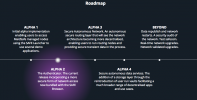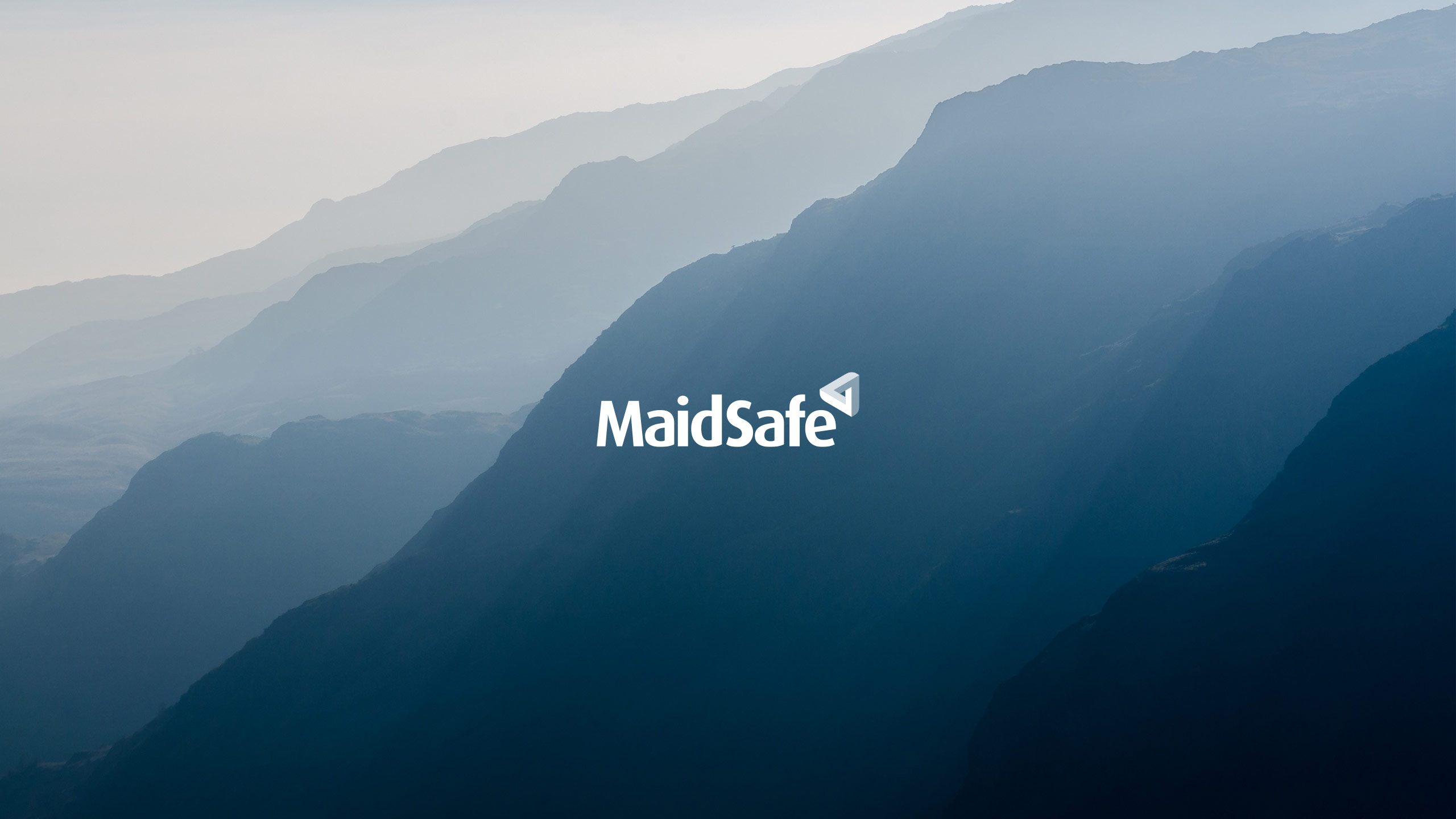Based in the UK, MaidSafe is a small company comprised of thinkers, inventors, tinkerers, PHds, engineers, and designers. Maidsafe’s vision is a bold one, to say the least:
“We aim to provide privacy, security, and freedom to everyone on the planet.”
Maidsafe is known for implementing what they call the “SAFE Network” (SN) – a next-generation decentralized and secure network. It is the world’s first and only autonomous data network and it uses a completely new technology known as “Proof of Resource”.
This network also has its own digital currency called – you guessed it – Safecoin (MaidSafecoin or MAID). It was introduced as an incentive engine to keep the network running.
There’s a lot to explain here but the operative question remains: why is Maidsafe worth paying attention to? In short, Maidsafe aims to radically change the structure of the internet, which, if successful could have enormous implications for both cryptocurrencies and the internet at large.
In this article, we’ll unpack all things Maidsafe and by the end, you’ll know exactly why this company, network, and token should be on your radar.
History of Maidsafe
Maidsafe was originally conceptualized in 2002 by David Irvine but it wasn’t until 2006 that it was officially incorporated. Its genesis is well captured by this quote from an interview with TechCrunch.
“The reason that this project started was a server-based internet is completely against engineering logic.”
From the early days, Irvine was aware that the internet had the utmost potential to be as much of a runaway success as a catastrophe. Maidsafe is his decade-long quest to liberate internet users from control and avert said catastrophe.
Unlike most its contemporaries in the crypto/decentralized network space, Maidsafe has been around since Apple was developing the first iPhone. Not many startups have this type of a timeline but then again, not many startups are trying to fundamentally restructure the internet.
Over the years, the Maidsafe team has been cooking up a smorgasbord of algorithms. They’ve received 20 granted patents (and 12 pending) and run countless test networks. The main interest here is not rehashing a long history but seeing what comes of subsequent Alpha releases.
The MaidSafe roadmap show baby steps on the path to a grand vision.

(Source: Maidsafe)
What is the SAFE Network?
The SAFE network is a new data and communications network that can provide the infrastructure for every type of web service that exists on today’s centralized Internet.
– David Irvine, Founder & CEO
The current model of the internet is centrally controlled, with the power, data, and resources concentrated in the hands of a limited group of tech companies. This data center and server-centric model has become the norm, and people and businesses have become accustomed to it. The ideation of the SAFE network is a direct challenge to this status quo and an effort to put users back in control.
The network itself is a new, secure and decentralized data management service that relies on the unused resources of individual users. Each participant of this system contributes some form of computer resource: data, storage space, processing power, and/or Internet connectivity, thus forming a large decentralized network.
The SAFE network is not controlled by any single entity and it’s exciting for many reasons, particularly that it offers a level of security and privacy not currently available on the existing internet.
A similar concept is described in this scene of Silicon Valley.

How Does The SAFE Network Function?
With such lofty goals, it’s worth taking a look under the hood and trying to understand how Maidsafe plans to deliver on its goals.
Let’s break it down – the SN transmits and stores data through its users, while never losing sight of its two core principles, safety, and security. The pooled resources of network users create a “world-wide autonomous system”.
The keyword here is autonomous.
When the full vision is realized, the Safe Network will be a self-managing, self-correcting network. The system will consist of individual nodes (computers) run by normal people who share resources to construct a system that is completely self-contained. As network volume grows, the architecture is designed to evolve independently to handle its growing responsibilities. Data is continuously encrypted and the entire system never stops self-optimizing.
There are a number of different technical features that make all this possible. Here are a few (for a deeper dive, click here):
- Self-Encryption: data which encrypts itself. Files uploaded to the network are shredded into pieces, encrypted and distributed around the network. These bits of information are unreadable and inaccessible to anyone other than the owner.
- A decentralized “opportunistic data caching” system: this means that files on the network are stored on devices all over the world. There is no singular point where a file can be compromised; in other words, a safer system. This distributed nature of the network is referred to as “opportunistic data caching”.
- Data availability and built-in redundancy: the network is designed to keep duplicate copies of all data at all times. As users sporadically go offline, the network moves the data elsewhere to ensure users always have access to their files.
How do Safecoins Fit into the Picture?
The current token for the SN is the “MaidSafeCoin”, a proxy that was released during MaidSafe’s crowdsale. They will be exchanged for Safecoins on a 1:1 basis when the network is launched.
For users, MaidSafeCoins are the gateway into the network (it gives them a resource to pay for things like storing data or making VoIP calls). For the system itself, they function as grease for the rails. MAID is a built-in way to ensure that all users of the network are compensated for the value they provide. In this case, value refers to unused computing resource (storage, processing power or connectivity, etc).
This process of adding value to the network is called “farming” (think hashing but a little different). Each farmer has a vault on their computer that stores encrypted network data which they have no access to. As pieces of network data are pulled off the farmer’s computer, MaidSafeCoin is paid to the user.
The rate of pay is linked to how much value a user provides and how often their node is available. This process relies on Proof of Resource to assess user contributions.
This distribution process is done entirely by the algorithms within the SN but it’s not new. Other digital currencies such as Counterparty, Mastercoin and Nxt take a similar approach. MAID can also be obtained by assisting with bug fixes, building apps, and through trade or purchase.
A limit of 4.3 billion coins will be generated and the current market cap for MAID is $192,739,809.
The Maidsafe Team
The CEO and driving force behind Maidsafe is and always has been David Irvine. Details regarding the team, board, and advisors remain slightly hazy, though. 18 people are listed on Linkedin as currently working on the project, but this figure is likely dated.
The most notable among these is Chief Operating Officer, Nick Lambert (previously of Paligap) and Justin Poirier, the founder of Tokenized Capital. It’s also a well-known fact that Maidsafe had 500 developers lined up to build applications following their 2014 IPO. If the dev updates on the SAFE forum are anything to go on, it’s safe to say the ranks are growing steadily.
Check out the Maidsafe podcast.
Challenges and Skepticism
Maidsafe has faced some geographic hardships in its time. Headquartered in Ayr, Scotland, they don’t have direct proximity to the beehive of Silicon Valley or the flush venture capitalists of London. As a result, they’ve leaned increasingly heavily on remote relationships.
Although the potential represented by the SN is tremendous, it’s been a relatively uphill slog. Some are willing to excuse the lack of quick progress due to the ambitious nature (and incredible scale) of the project, but others are still frustrated by the lack of action.
There are further technical challenges facing the MaidSafe dev team (for instance, distributing the network and maintaining data reliability are both key challenges), and of course, there is always the issue of mass adoption. Whether or not these issues will be overcome is yet to be seen.
How to Purchase and Store MAID
As alluded to above, MAID can be obtained by farming, building apps or helping with code. It can also be purchased or traded on a number of verified exchanges.
Once obtained, you can store your MaidSafecoins in a wallet. Omni and Counterparty are two of the most commonly used for MAID, or you can create a paper wallet for offline storage as many people do with Bitcoin.
Once the transfer from MaidSafecoin to Safecoin happens, the network will likely send existing coins to an unspendable address (burning them) and replace them with an equal number of Safecoins.
Last Thoughts
Getting people to understand the radical implications of Maidsafe’s reformulated network architecture, encouraging adoption/app development and facing the technical difficulties of scale are all huge challenges.
But Irvine and his team have already shown they have grit and will be sticking around for the long haul.
As for Safecoin, it is another step further towards the decentralization of the monetary system. By combining a decentralized framework with Bitcoin’s decentralization monetary processes, a vibration has started — one that may shake the very bedrock of cryptocurrency.

